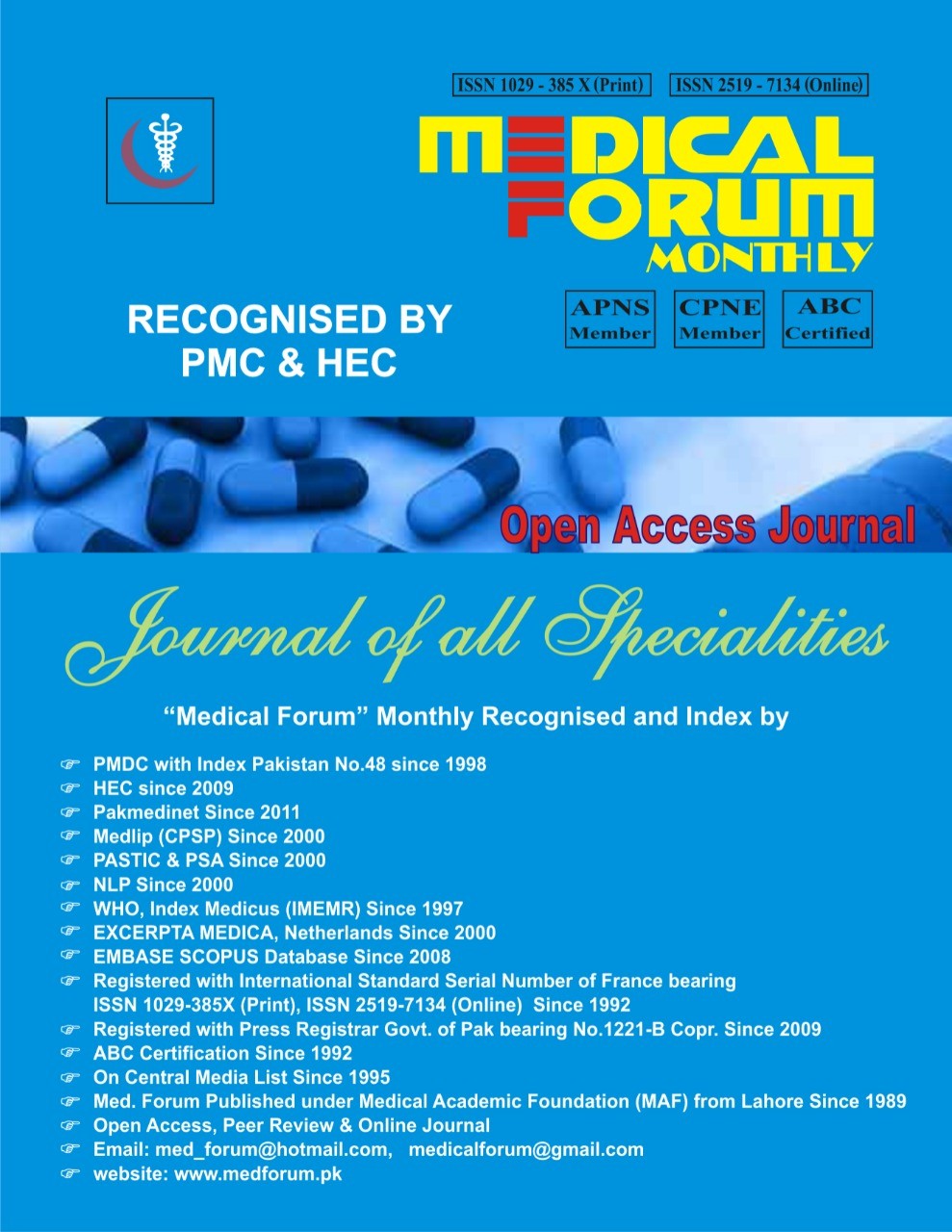
2.Preoperative Predictors and Frequency of Conversion of Laparoscopic Cholecystectomy into Open Cholecystectomy
Muhammad Imran Anwar, Sameen Tahir and Muhammad Aamir Jameel
ABSTRACT
Objective: Determining the preoperative risk factors and frequency of conversion of laparoscopic cholecystectomy into open cholecystectomy.
Study Design: Prospective study
Place and Duration of Study: This study was conducted at the Department of Surgery, Shaikh Zayed Hospital Lahore, from 1st June 2019 to 30th June 2021.
Materials and Methods: Two hundred and ninety one patients who were enrolled. Demographic data e.g. name, age, gender and address were obtained and clinical examinations were performed. All patients were admitted in surgical ward after preoperative workup and fitness for surgery. All of them were taken up on list for laparoscopic cholecystectomy. All the symptomatic patients undergoing laparoscopic cholecystectomy for gall bladder disease (gall stones, gall bladder polyp). Patients were excluded from the study who refused laparoscopic cholecystectomy.
Results: There were 167 (57.3%) females and 124 (42.6%) patients were males with mean age 35.27±14.18 years. Mean duration of disease was 4.24+3.98 years. Mean gall bladder thickness was 4.28±1.06mm. Excessive bleeding was the commonest per-operative complication found in 40 (14%) patients. Difficult laparoscopic cholecystectomy was found in 32 (11%) patients need conversion to open procedure. Post-operative wound infection found in 18 (6%) patients. Frequency of difficult laparoscopic cholecystectomy which needs conversion to open procedure was high in patients having increased thickness of gall bladder wall. In this study 32 patients (11%) were transitioned from laparoscopic cholecystectomy to open cholecystectomy. The most common cause of 21 (65.6%) was fibrosis in the Calots triangle and adhesion due to inflammation.
Conclusion: Conversion happened in 32 (11%) of the patients and mostly because of increased thickness of gall bladder. Even though other factors like bleeding per-operatively was important emphasis is made on timely conversion to avoid post-operative complications.
Key Words: Gall stones, Gall bladder polyp, Laparoscopic cholecystectomy, Open cholecystectomy
Citation of article: Anwar MI, Tahir S, Jameel MA. Preoperative Predictors and Frequency of Conversion of Laparoscopic Cholecystectomy into Open Cholecystectomy. Med Forum 2022;33(3):6-10.
